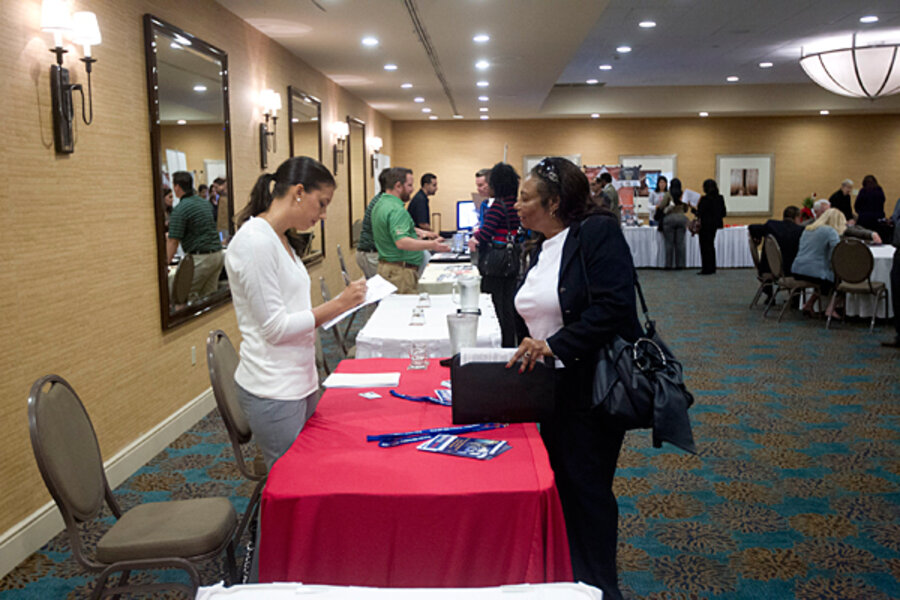Unemployment rate falls for November, but is it for the 'wrong' reason?
Loading...
The economy added 146,000 jobs in November, and America's unemployment rate fell to 7.7 percent, according to new Labor Department numbers that show the US job market mending steadily but slowly.
Job growth was better than economists had expected. But this welcome news was offset by downward revisions to the official estimates of job gains in two previous months.
The decline in unemployment, meanwhile, came because of what many economists call the "wrong" reason – people dropping out of the labor force. Because fewer Americans were looking for work, the jobless rate fell 0.2 percentage points from October to November.
Normally, in a job market that's growing stronger after a recession, rising employment should coincide with rising numbers of people reentering the labor force.
That may start happening in 2013 – or even in December. But for November, the job-market numbers may have been influenced by an important twist known as superstorm Sandy. The storm, which hit the East Coast just before the month of November began, may explain why the labor force shrank.
About 370,000 Americans reported last month that they couldn't work because of the weather – about five times the normal number for November. To the degree that the decline in the labor force was linked to storm damage in places like New York City and New Jersey, those numbers may adjust the other way in the next month or beyond.
So it's probably wise not to read too much, good or bad, into the Labor Department's report for November.
Moreover, another big storm, of sorts, looms over the labor market: the tumultuous negotiations in Washington over the "fiscal cliff" of tax hikes and federal spending cuts that are set to take effect in January. Both sides say they want to avoid steep tax hikes that would slow the economy. But the outcome of the negotiations remains uncertain.
"If the cliff is averted then we could see the release of some pent-up demand" as businesses hire and invest, predicts Paul Ashworth, chief US economist at Capital Economics in Toronto. "If the US goes over the cliff then employment, like GDP, will fall sharply."
Mr. Ashworth's comments came in a report analyzing the new Labor Department figures. He calls the latest job numbers a "mixed bag," but perhaps more positive than negative overall.
The survey of employers produced the figure of 146,000 jobs created, which is better than the roughly 85,000 that forecasters had predicted for the month. The Dow Jones Industrial Average rose modestly Friday morning, with that data point playing a role.
The unemployment rate is calculated from a separate set of numbers, a survey of workers in US households. That survey showed jobs moving in the opposite direction, with the number of employed people falling by 122,000 for the month. And it showed the labor force shrinking by 350,000, which caused the official unemployment rate to fall.
But Sandy may largely explain the declines in the household survey in both the labor force and in jobs.
The bigger picture, though, is that the fiscal cliff remains unresolved. A deal coming out of the talks could result in modest tax hikes and federal spending cuts, which could allow the economy to keep adding jobs in 2013. Some economists say the pace of job growth could even accelerate.
But an outcome to the talks that involves protracted uncertainty and the scheduled tax hikes going forward could be costly, perhaps sending the economy into recession.
One indicator of the fiscal cliff's importance to the economy: A December survey by Reuters and the University of Michigan, released Friday, showed a sharp drop in US consumer sentiment, with those potential tax hikes a factor.







